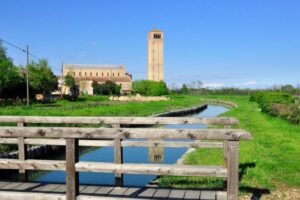Venice is at the same time the easiest and hardest city to visit. Easiest, because it’s maybe the most popular tourist destination in the world. No problem getting there, getting around, finding restaurant menus in English, etc. Also, it’s not dangerous, and the worst that can happen is that you get scammed and spend too much.
At the same time though, it’s very, very hard, almost impossible, to pierce the touristy façade and get to know the real Venice. The Venice of the people working and studying every day on an island and of the kids that grow up independent from a young age because no cars and low crime mean lots of freedom. The Venice that hides behind big crowds, souvenir shops, pricey restaurants, Airbnb rentals.
So, we asked our team of Spotters to dig up Venice’s hidden side and reveal her secrets. Eventually, we chose 12 selected gems that will allow you to understand this city in a way no other tourist guide does.
The tiny, forgotten island where it all began
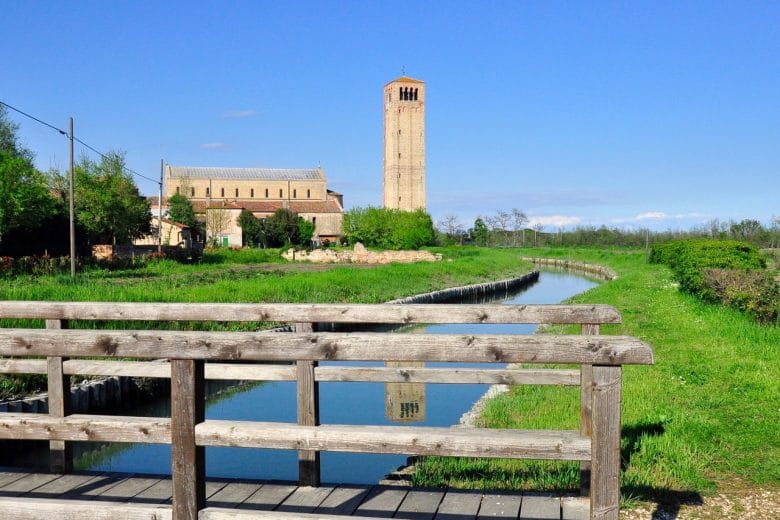
The Murano and Burano islands are very well-known by visitors coming to Venice and are commonly considered as a “must-do” day trip. However, Torcello’s charm deserves much more recognition. Despite its small dimensions and fame, it is often underrated. Just a five-minute vaporetto trip from Burano, this is one of the most ancient settlements of the lagoon. The beautiful Basilica di Santa Maria Assunta, as well as the Santa Fosca church and other archaeological remains, are there to testify for it.
There are a couple of restaurants on the road towards the Basilica square, quite affordable and with friendly staff. Don’t miss the “Devil’s bridge” on the right (Ponte del Diavolo)! There are only two of its kind still standing in the whole Venetian lagoon. It might be fun to try and find the other one while wandering through Venice.
The last coffee shop to serve coffee straight from the roastery
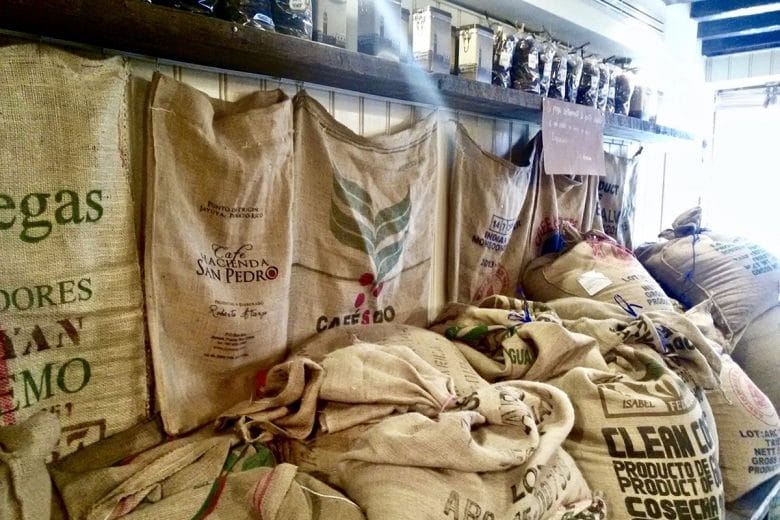
The best way to get your caffeine shot is heading straight to Torrefazione Cannaregio according to our Spotter Annamaria.
As you may know, Italians have quite discriminating taste when it comes to coffee. Even the pickiest people will find their perfect coffee blend here. While walking in the always-crowded Strada Nuova you barely see the shop if you’re not looking for it. Once inside, the smell of freshly roasted coffee brings you to another world far away from the busy people outside. The small size of the workshop, the old-fashioned interior design, jute bags, and exposed beams, only add to its unique charm.
Torrefazione Cannaregio, founded in 1939, is the last coffee shop with an in-store roasting license. The higher quality coffees from all over the world are processed each day and mixed in front of you. You can even taste them just toasted! Those steaming cups release such an overwhelming perfume that I always take at least 5 minutes to enjoy my coffee. Together with your coffee, we recommend you indulge in some small pastries and cookies or brioches. If you’re staying in Venice for a while, you can get a membership card: 10 coffees for € 8.20 – which is super cheap for to the quality of the product!
The most hidden palace with the best Venice view
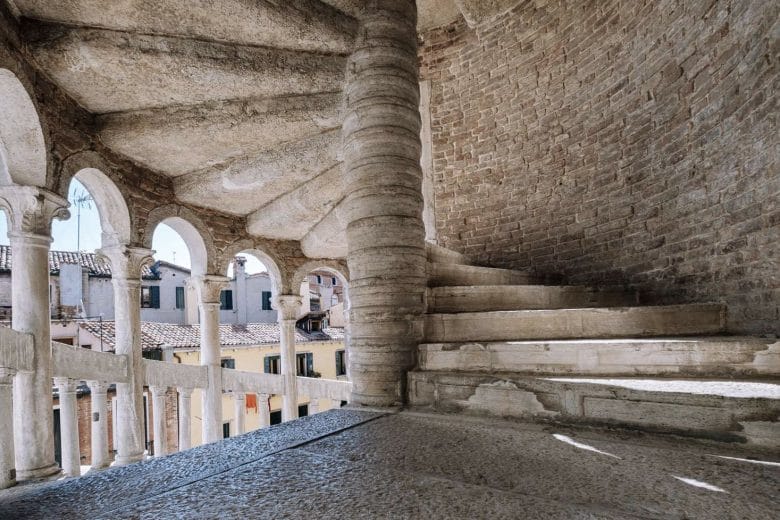
Talk about a hidden gem! This architectural phenomenon has re-opened after generations of restoration and squabble. It’s easier to get here by mistake than to find it! You’ll be bobbing and weaving through narrow calli and then suddenly… Surprise! Welcome to the visually stunning cylindrical tower of Scala Contarini del Bovolo! A ‘bovolo’ in Venetian dialect is a snail shell.
Venice history sees lots of wealthy families outdoing one another in home design. Just take a ride down the Grand Canal to enjoy the visual game of “I have more money than you do”! What’s unique about this palace is that it is located in a dead-end calle (street) genuinely hidden from any passerby. The design is purely aesthetic, a unique combination of Gothic, Renaissance, and Venetian-Byzantine.
The purpose, apparently, was to decorate the plain palace which it conceals. The stairs spiral up to a ‘loggia’ (covered terrace) that has the most spectacular views of the city. You will feel closest to the core of the city here, pivoting above the lagoon. The views from the top floor are so stunning…words simply can not do this spot justice!
Learn how to make your own souvenirs
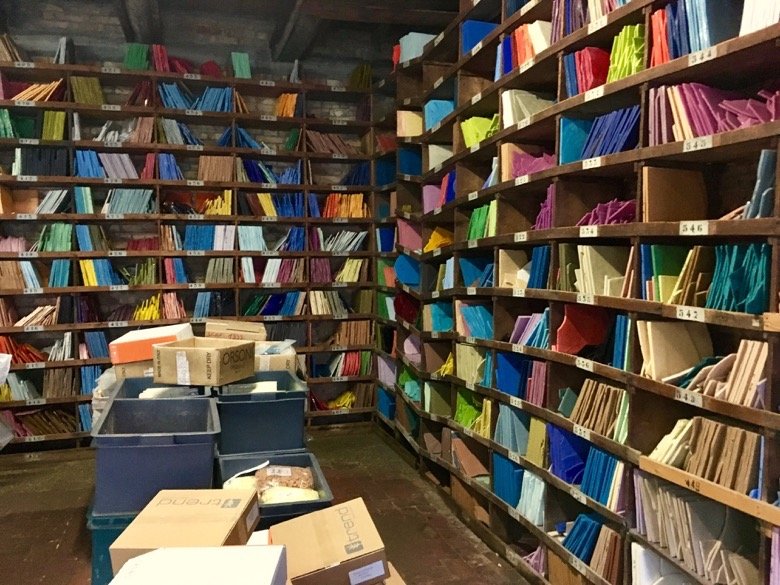
The Orsoni furnace (active since 1888), is the only one still in the historic center and it has the merit of having revived the city’s sublime Byzantine mosaic art production and the Renaissance technique of Murano pure enamels.
If you book in advance, on Wednesday morning you can visit the furnace with a guide for free. You’ll discover how the mosaic tiles are made and the various phases of the process. The first step is the crogiolo: they melt the raw materials to form the opaque white body, and then add metal oxides to obtain the various colors. Then there is “rullata” to realize “pani” of glass, and later the insertion in the oven. Then the glass plates are gradually taken to room temperature, so they can be cut into pieces with a machine. The most impressive thing is that it’s all handmade by Venetian people who keep the tradition alive.
The real gem of the furnace is the “Library of the colors”, the result of long research work. It is a picturesque archive that preserves cataloged over 3,000 gradations of tones. Its endless color combinations are sold all over the world to big companies and private individuals alike.
The place also offers private mosaic lessons lasting 3,5,7 or 10 days. There, you can learn all the mosaic techniques and eventually create your own work of art.
A different type of Venice panorama
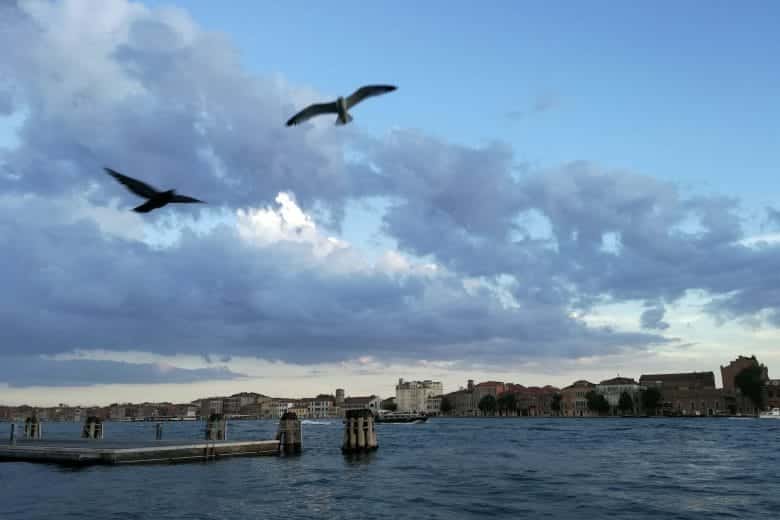
Fondementa Delle Zattere (by Filippo Muraro)
Venice is well-known for its narrow streets and its fascinating hidden corners. Little space, crammed pathways. Although, an exception does exist: Fondamenta Delle Zattere, or simply Zattere. This street is very long and wide and looks at the Giudecca canal. It brushes almost the whole south side of the city.
The name Zattere, ‘rafts’ in English, likely derives from the large wooden platforms that people used in the past to transport salt. At present, is one of the best panoramic places in Venice, and the large street plus the lagoon in front of you makes you feel like you’re at the beach. In the morning the bright sunlight spreads and reflects in every direction like nowhere else in the city. During the last hours of the day, beautiful sunsets light up the horizon toward the mainland.
During daytime lots of local people come here and sit on the ground, chatting and chilling. It’s very close to the university as well so you’ll find plenty of students all the time. It’s easy to find musicians or even painters too! The nearby Giudecca‘s island and the distant shapes of the city’s buildings offer inspiration for both of them.
Zattere well represents Venice’s soul: cheerful and joyful. “If I want to have a good conversation with a friend while sunbathing and sipping a beer, this is the perfect spot!” writes our Spotter Filippo.
Dive into antique Venetian markets and their regulars
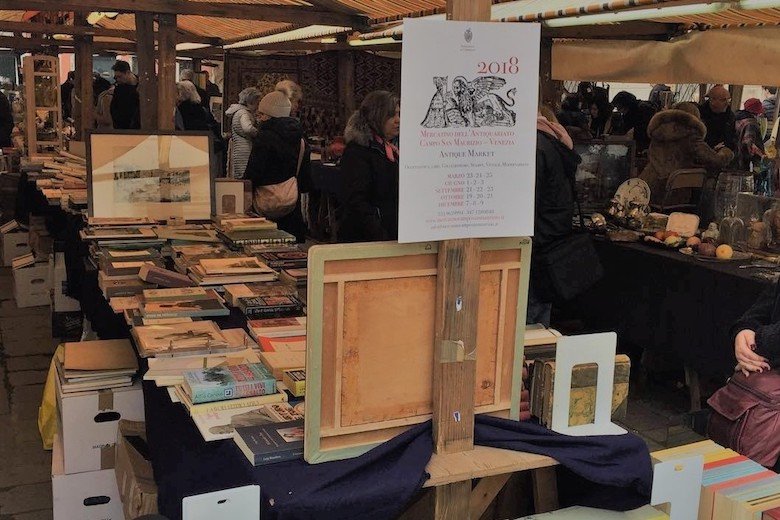
The Antique Market in Campo San Maurizio has been the most bountiful market in Venice since it first started in 1970. It takes place in a spot close to the most crowded areas of the city, although there you can still breathe authenticity and intimacy. It only takes place five weekends per year and if you’re in Venice, a visit is a must.
There are many exhibitors and they come from different cities in Italy. Each of them exhibits various goods, objects, and curiosities from the past. You’ll find books, furs, pipes, Murano chandeliers, old postcards, vintage shoes, pocket watches, leather bags, carpets and sunglasses, tea and coffee cups and plates, cutlery and jewelry.
There are pieces from the 1600s to the 1900s on display on typical wooden stands, and they attract many collectors and experts. Through the stands, you can observe all sorts of interesting characters: from fashion-forward shopkeepers to local grandmothers.
Did you know the word Ghetto comes from Venetian dialect?
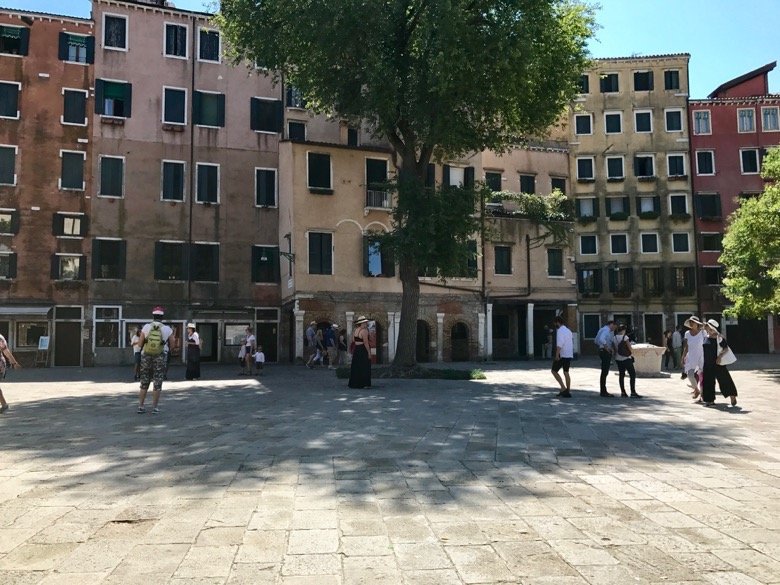
Past and present collide in a unique and often overlooked quarter of La Serenissima, Venice’s Jewish Ghetto. A vibrant community throughout history, the “ghetto” shows the true spirit and diversity of Venice.
The origin of the word ghetto comes from this place, Europe’s first marginalized community. In Venetian dialect, ironwork foundries were called “geti”. The foundries were located here as the area is completely encircled by canals. Isolating the island, thus minimizing the threat of potential fire risk while simultaneously offering a convenient location to contain a rapidly growing community in the early 1500s.
The first individuals to live here were Ashkenazi Jews from Eastern Europe. In their native tongue, the word “geti” (foundry) became “gheto”. The word evolved to our present-day use of the word “ghetto”, defining an area of a city whose members are of a particular socio-economic or minority group.
Upon entering this community, take notice of the height of the buildings, the tallest in Venice. The reason lies in the lack of space to build new houses, so the easiest solution was to add upper floors to existing buildings. Today, the campo is brimming with playing children. The smell of fresh-baked bread and pastries waif through the calle (streets). If you’re here, definitely try the pastries at one of the many Jewish bakeries: you won’t regret it!
Antique shops, furniture restorers, art galleries, and Kosher restaurants mingle with typical Venetian merchants here. The area is truly one of the most interesting mixes of cultures of the city. Our Spotter Stacy’s favorite activity here is a visit to the Museo Ebraico di Venezia (Hebrew Museum) followed by a canal-side lunch at Gam Gam Kosher restaurant.
A quick island getaway to forget the crowds
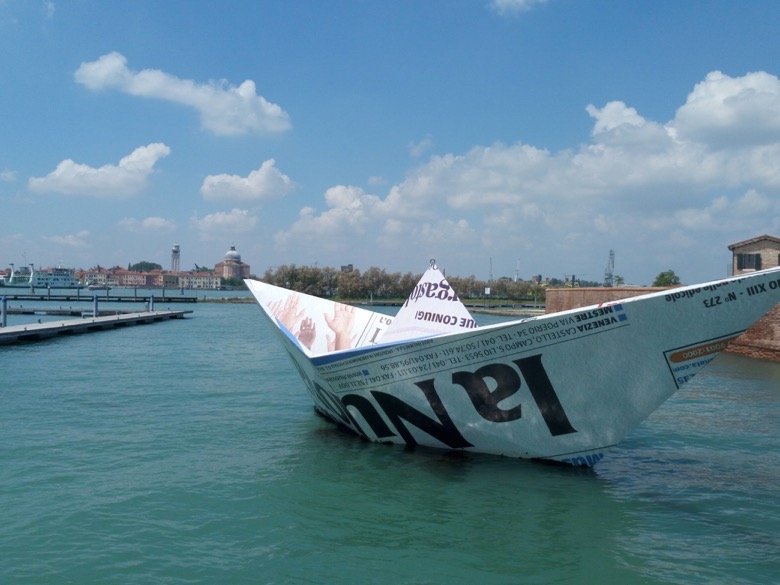
During summer, the crowds of people slowly marching through narrow streets and the boiling sun can be overwhelming. There are days when getting out of the huddle becomes necessary: that’s why you shouldn’t think twice and head to La Certosa Island. Looking at the Venice map this island is located right in front of San Piero di Castello. It’s actually very easy to reach by vaporetto lines 4.1, 4.2 or 5.1, and 5.2.
In the past centuries, the island used to host convents and military structures. Then, in the late 90s, massive renovation works took place, mostly thanks to the initiative and passion of several local citizens associations and EU funds. The island is now a freely accessible green area where people can enjoy sunny days. It’s a favorite place for locals to take a walk with their dogs, play with their children, and breathe some fresh air. Venice people often reach la Certosa by boat, as a long dock surrounds it, and eases the access by water.
Party like a local
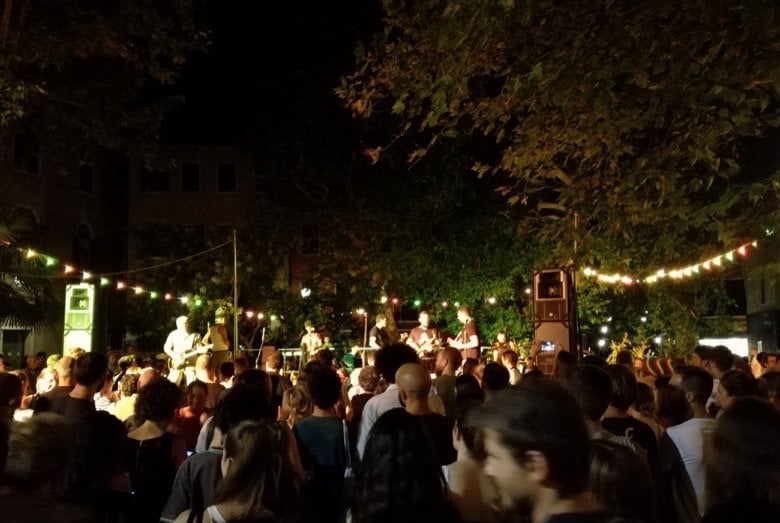
When our Spotter Filippo discovered campo san Giacomo dall’Orio he was impressed. The festive atmosphere, with a lot of kids running and having fun and energetic music playing, is unique to this square. Campo san Giacomo has one of the most ancient and beautiful churches in the city, probably built in 976 AD. Another uncommon feature is the trees spread in the square’s space, very rare in Venice. Here there are red benches all around to relish the trees’ shade during warm days.
Filippo comes here in the evening to meet random people with whom to have fun, play guitar or sing and dance. This activity is in fact one of the most appreciated around here and it’s easy to make friends. What’s more, in the middle of July, there is a beautiful 10 days traditional festival called Sagra di San Giacomo. Tango events take place here too, every Tuesday starting at 21:00, from May 31 to October 1.
In a city that is flooded with tourists, this is a space for local people to carry on with their normal life. In Campo san Giacomo Filippo can feel part of a community.
Save water, drink wine!
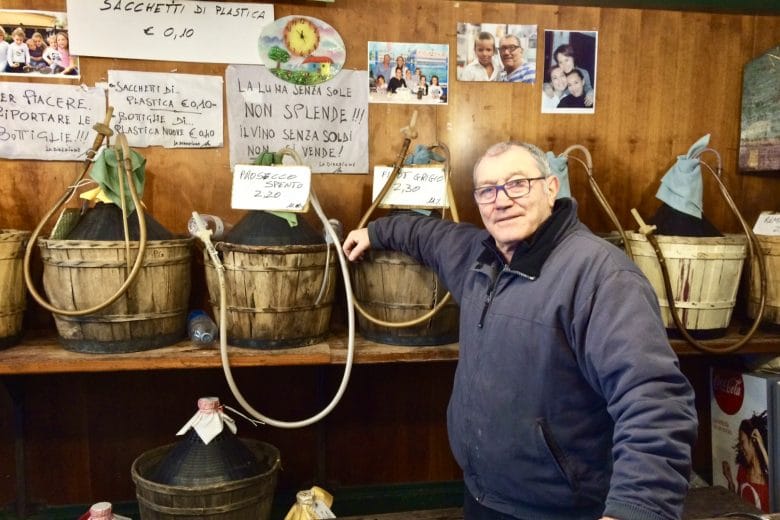
Vino sfuso, literally wine from the cask or demijohn, is a delicious staple in the Italian diet. Daily, families take their empty bottles down to the local cantina for a refill of their preferred grape.
In the past, everybody drank wine and beer as it was often safer than water. Not only because of possible bacterial contamination: enemies could poison the water supply as well. So – drink vino! Table wine usually hovers around the eleven percent alcohol level, making it light enough for lunch. In Venice, each neighborhood has at least one cantina to choose from. These are genuine local businesses that do not cater to tourists. So, get ready to practice your Italian and pay in cash.
In each region of the country, you will find this type of shop. It’s usually conveniently located near the butcher or baker. Regionalism is a predominant cultural element of the Italian lifestyle. So, in Tuscany drink Chianti, and in Venice drink Prosecco! You can bring your own bottle for a refill, glass or plastic are equally acceptable.
Stacey loves the quote hanging above the demijohns here. It less poetically translates into English as “the Moon can’t shine without the Sun and the wine can’t be sold without being paid!”. Vinaria Nave de Oro also offers a small selection of DOC and DOCG certified wines for purchase and on occasion local salami too.
Leave the island and venture into the mainland
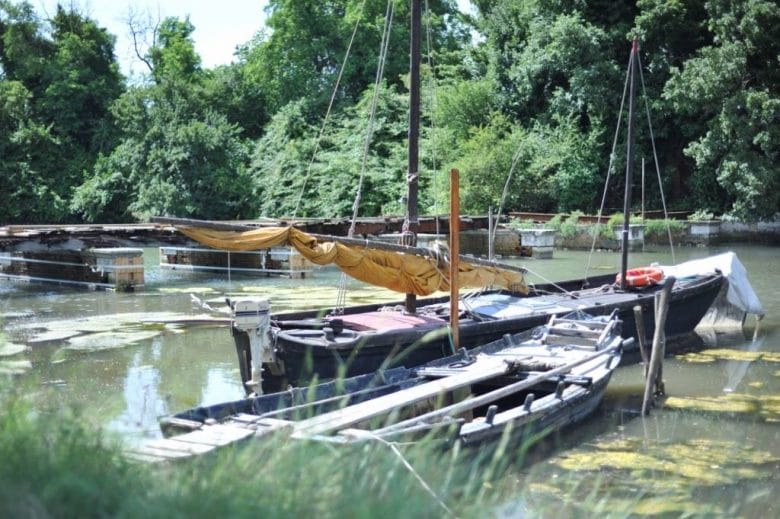
Forte Marghera is a place you get affectionate about! Our Spotter Cecilia often finds herself spending summer evenings with friends in the fortress, surrounded by the hundred or so cats that live here. To get there you need to cross the Ponte della Liberta and leave the island of Venice. You’ll get on the mainland part of the city, which is where most locals live and work. Here, you’ll find several places called forte, surrounded by a green area. Forte Marghera is one of the biggest and most interesting and can be accessed by boat from the lagoon.
The entire bay has recently been restored, and the result is a large and well-organized area. There are big fields, canals, bars, and exhibition areas that bring a mix of nature, history, culture, and food and drink. This place caters to people of all ages and from all walks of life. There’s something for everybody and if you’re a tourist, it’s a great place to meet local people.
You can go there on a sunny day to immerse yourself in the green and watch the lagoon. There are bars and beer gardens, which are quite rustic and handy. During the summer, they organize exhibitions, events, and street food festivals.
Extraordinary architecture in the most authentic district
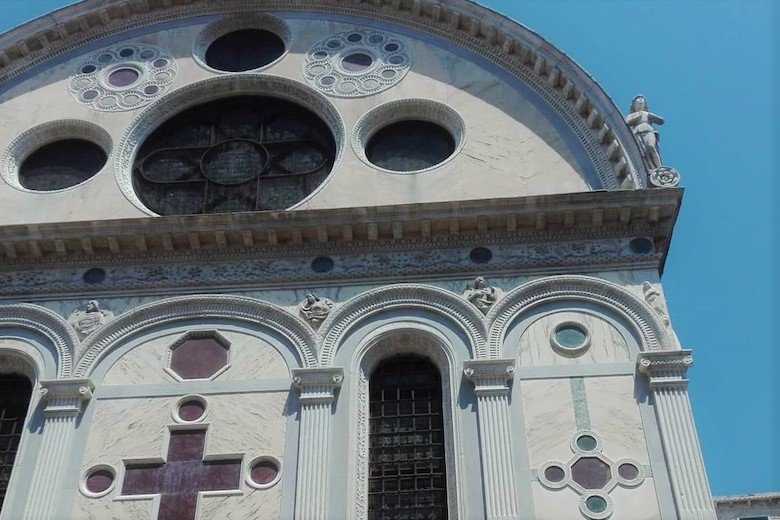
If you want to add a precious gem to your day-plan in Venice, I suggest you visit Santa Maria Dei Miracoli Church (Holy Mary of the Miracles). Even if am not a devotee, this small church fascinated me for its architecture and because it reminds me of a treasure chest. It is an authentic historic and artistic treasure and has a lot of sentimental value for Venetians.
Built in the 15th century, it has remained practically untouched, unlike all the other churches in the city. The architecture is extraordinary, with both interior and facades sculpted and redressed with multi-colored marble. Three sides are visible from the streets, whereas one side directly overlooks a little canal crossed by gondole.
This small gem is hidden in Castello, the most authentic district of Venice. Once you have visited the church and admired the details carved into the marble, I suggest you stroll along the narrow streets and dive into all the off-the-beaten paths. There you will see clothes hanging out to dry, butchers, and greengrocers.
It’s an incredibly calm and quiet place and it’s hard to believe you’re not far away from Piazza San Marco. Cecilia suggests you to go the large field of San Giovanni e Paolo, to admire the majestic basilica and the wonderful entrance of the hospital with the same name.
Want more hidden gems? Check out our Venice blog & app!
